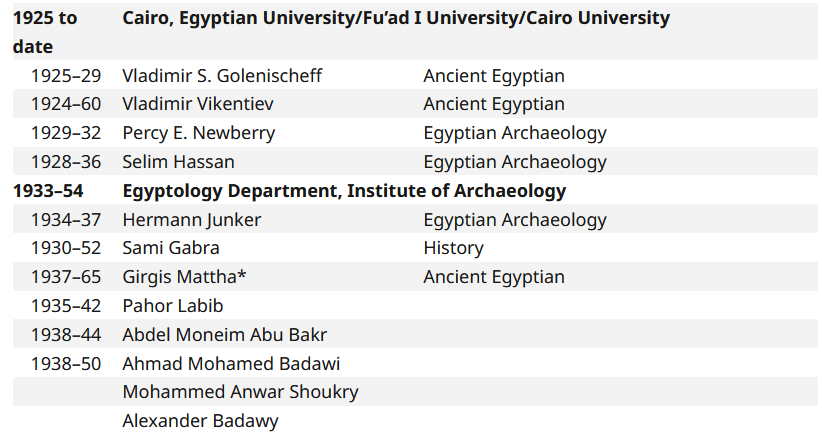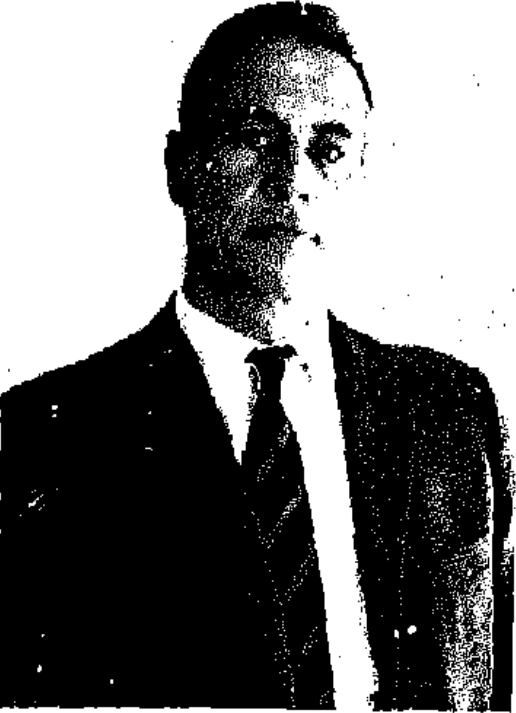About a year ago, I became captivated by the enigmatic figure of Iskandar Badawy, a man whose life and work remain shrouded in mystery. It was an unusual fascination, akin to the youthful obsession with a sports hero—something I had often dismissed with a laugh. Yet here I was, dedicating my time to pondering the life of a man long passed, a scholar whose legacy had left an indelible mark on the study of ancient Egyptian architecture.
How could someone of such immense academic importance—author of History of Egyptian Architecture I, II, III and groundbreaking works like The Harmonic System in Ancient Egypt—leave behind so few traces of his personal existence? Not a single photograph of him seems to be accessible online. Why did he leave Egypt, and did he leave a family behind?
My quest to uncover the life of Alexander Badawy began with his writings, and I sought him out in the reflections of those who knew him. Dietrich von Bothmer once described him as "the shy Dr. Alexander Badawy." Was it his shyness that kept him in the shadows, away from public acclaim? Or was it this very nature that allowed him to produce such profound contributions to the understanding of Egypt's architectural heritage?
Through his scholarship, Badawy offers us a window into the grandeur and complexity of ancient Egypt. Yet the man behind the work remains elusive, a figure whose life raises as many questions as the monuments he studied. This introduction delves into the duality of Alexander Badawy—a scholar whose brilliance is immortalized in his writings, yet whose personal story is veiled in obscurity.
Alexander as he was intrdouced by Mahmoud Abdel Razek Salah Ramadan
دکتور اسکندر بدوی .
استاذ الآثار المصرية ـ كلية الآداب / جامعة فؤاد الأول « القاهرة حاليا »
أستاذ الآثار المصرية جامعة كاليفورنيا ـ لوس انجلوس ـ الولايات المتحدة
المؤهلات .
1 ـ بكالوريوس كلية الهندسة ، قسم العمارة من الجامعة المصرية سنة 1936
۲ ـ دبلوم معهد الآثار المصرية من كلية الآداب جامعة فؤاد الأول سنة 1939
۳ ـــ دكتوراه في الآثار المصرية في كلية الآداب ـ جامعة فؤاد الأول سنة ١٩٤٢ حياته
قام بتدريس علوم فقه اللغة وتاريخ الفن في مصر والشرق في كلية الآداب جامعة فؤاد الأول ـ جامعة القاهرة حاليا .
قام بالعديد من أعمال الحفر في الكثير من المواقع الأثرية في مصر والسودان .
استقر به المقام في الولايات المتحدة الأمريكية حيث قام بالتدريس في جامعة كاليفورنيا ـ لوس انجلوس .
لم تنقطع صلته بوطنه الأم طوال فترة حياته حيث كان يحضر لمصر عدة شهور كل عام للعمل والدراسة .
كان ذا عقل موسوعى وصلابة وغيرة على وطنه .
تظهر قدرته الفنية كفنان مبدع في العديد من الرسوم والأشكال التوضيحية التي رسمها بنفسه وتزخر بها كتبه ومؤلفاته ومقالاته
The table below is from A History of World Egyptology : Edited by Andrew Bednarski, University of Cambridge,Aidan Dodson, University of Bristol,Salima Ikram, American University in Cairo

Auf der Such einem Foto

Pictures of A.B. I remember I saw in two books; The Arabic Translation of his book 'History of Egyptian Architecture Part 1' Arabic Translation This is the Picture shared here.
The second book unfortunalty I did not write the name down but if I am correct he was in a number of pictures in the books that show him with the location that was being studied in the book. or was I mistaken and the man in thoses pictures war da nur als begleiter ? I really need to find this book again.
Alexander in Bothmer Diary
Junuary 10 : 'En route we discussed the possibilities of getting Alexander Badawy and Sami Gabra to the United States, both of whom would have loved to come for a visit.'
March 25 After breakfast I sat for a while in the sun in front of the house and waited for Abubakr, who arrived in his car with Professor Rosenstock (the zodiacal light enthusiast), a Miss Kelly (from Chicago, an anthropologist), and Dr. Iskander [Alexander] Badawy, and after a cup of coffee we walked to Abubakr’s excavations northwest of G 2000. 146 He told me that his excavations would be published by the Farouk I University of Alexandria; Alexander Badawy was drawing the plans and writing the architectural report.147 Mohamed Abouelnaga Notes:Later on H.F. will refere to this work on an article of his with out mentioning the name of Badaway At Abubakr’s home we had an excellent lunch, minus Miss Kelly and the Professor who had gone back to Cairo by taxi. After the coffee and a suitable interval I took my leave and walked with Alexander Badawy, who told me of his troubles in trying to understand the many types and Reisner’s History of the Giza Necropolis I.75 148 March 26 The shy Dr. Alexander Badawy was also present. 149
On leaving Egypt:

On account of Labib Habachi:
Nasser emerged as a symbol of new Arab dignity in the face of imperialism, and the attack on Egyptian territory gave him grounds to sequester and eventually nationalize foreign property and interests in Egypt. This included the Antiquities Service, which had been in the hands of French directors-general like Mariette, Maspero, Grébaut, de Morgan, Lacau, and Drioton since its foundation. Egyptians were given control of the institution under its revised name, the Egyptian Department of Antiquities, or simply the Antiquities Department. Egyptian Egyptologists naturally assumed that one of their own would be chosen for the prestigious post of director-general. There was an outcry when they learned that Mustafa Amer (1896–1973), assistant professor of geography at the University of Alexandria, had been appointed. The choice was, in fact, a wise one because Amer was academically qualified, having proved his archaeological worth at the predynastic sites of Maadi. Moreover, Amer had a strong personality and a flair for diplomacy, qualities that would be much needed by the first Egyptian to hold this prestigious position. Specialist Egyptologists felt let down, however, and were outwardly critical of Amer when he failed to appoint a single one to the new department. This may have been one of the reasons for the ensuing brain drain in the field. Ahmed Fakhry pursued his career outside Egypt, and Alexander Badawy (1913–1986), the architect and archaeologist who excavated at Tuna al-Gabal and Qasr Qarun in the Fayoum and taught ancient history at the universities of Cairo and Alexandria, became professor of history of architecture at the University of Kansas, and professor of art design and history at the University of California. “Almost without exception, Egyptologists spoke contemptuously of the 'group of colonels' who ran the country," was how Gamal Mokhtar, under-secretary of state for monuments and museums in 1968 and chairman of the Egyptian Antiquities Organization from 1972 to 1977, recalled the era. "Some were more explicit-they called them a bunch of idiots," he added The search and the obsession is still going
Egypt 1950 My First Visit BY BERNARD V. BOTHMER

👍